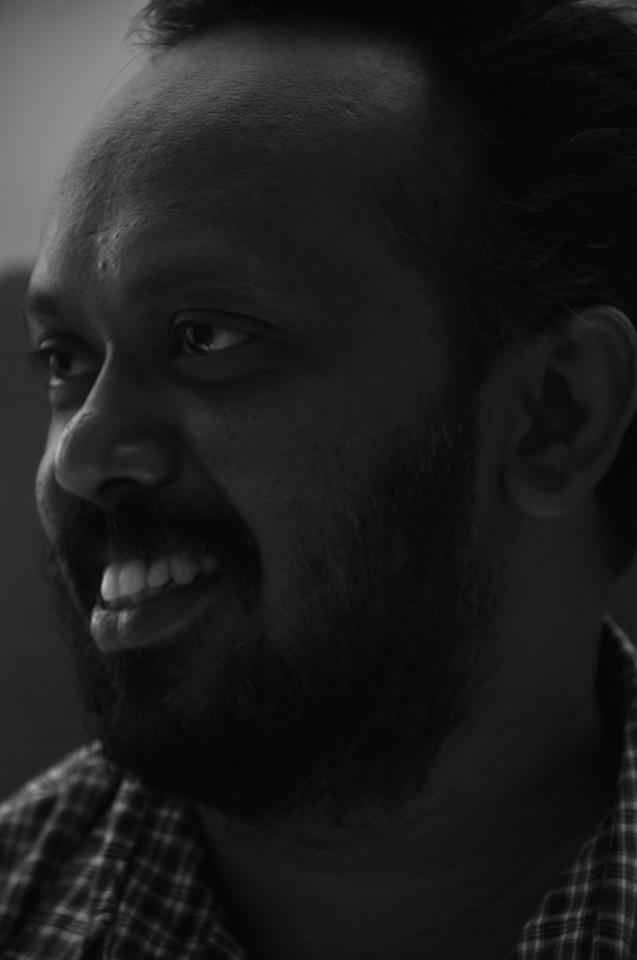Ajith Kumar A S
 (Published originally in the website Azhimukham; translated from Malayalam by Deepti Sreeram)
(Published originally in the website Azhimukham; translated from Malayalam by Deepti Sreeram)
K.J. Yesudas has two kinds of voice that differ from each other. The first being his singing voice and the other being the one that we hear when he speaks. This difference is not merely one that confine to the level of his voice. In fact, it also percolates into the figure of Yesudas who expresses and negotiates his persona. If one makes an attempt to observe these differences closely, one can observe and understand how yesudas and his fans reconcile various ‘contrasts’.
The singer and the persona in Yesudas is composed of various contrasting elements. Among these contrasts, the two differing strands of a man who sings both classical music and film songs is a pivotal one to begin with. If we take a look at the history of Malayalam film songs, we can easily pin Yesudas as the most crucial event within its scrolls. Though Yesudas has sung varying kinds of songs including many a popular song in different dialects, styles and languages, what makes Yesudas stand apart is his representation as the quintessential and authoritarian figure of ‘pure/unadulterated music’ in the world of Malayalam film music.
This can be clearly seen when we look at Malayalam cinema’s attempts at reclaiming the ‘pure music’ tradition in Malayalam film industry. For instance, movies like His Highness Abdullah and Sargam which spoke of ‘pure carnatic music’ in its narrative and protagonists that spoke of the need to produce ‘unadulterated music’, had Yesudas at the helm of its film music. Thus, songs such as pramadavanam veendum sung by Yesudas were attempts made by Malayalam cinema in bringing back the tradition around ‘pure/unadulterated music’. However, this site of Yesudas’s popularity that ventures into good and pure music occasionally is the problematic for traditional musicians. In such situations where carnatic musicians scoff at Yesudas being a playback singer in film industry, Yesudas cleverly maneuvers the various ‘contrasts’ that he faces at the level of a musician through the voice he employs when he speaks in the public domain.
In a public space, the respect that Yesudas’s speech commandeers is one that is built culturally. Though this recognition does stem from Yesudas’s popularity as a playback singer and from his construction of himself as the symbol of secularism, I also believe that this respect gets authenticated and sustained in public spaces because of his projection as an advocate of pure music. If at one end of the spectrum, Yesudas was seen as the one casted out from Guruvayur temple, then at an extreme end of the other he is also the one who constructed a visible Savarna Hindu persona for himeself. It is this construction that makes someone to wonder why a person like Yesudas is denied entry into the Guruvayur temple.

Yesudas, at a ‘classical’ music concert
Parallel to this scenario, I also believe that he might have been using subsequent titling of Yesudas as ‘Ayyappadas’ after his entry to Sabarimala and his early rendition of the famous song ‘harivarasanam’ praising Ayyappan, as a counter-argument to this denial of entry at Guruvayur. What this proves is the pressure that musicians face in the cultural sphere of Kerala to project an overall Hindu commonsense for recognition. For instance, when Jerry Amaldev made the hit song ‘Ayiram Kannumayi’, the criticism the song faced that it sounds like a church song reflected the Hindu expression, outlook and mentality of the Malayalam movie and music enterprise. It is in this same vein that I argue that, the recognition that Yesudas has garnered for himself is an outcome of his negotiation with an overall Hindu outlook and expression. Thus, through ‘Guruvayur’ Yesudas was politically articulating a position of being denied the expression of being a Hindu symbol.
When Yesudas appears in public spaces, he is clothed in white. Donning a white shirt and dhoti, he speaks for classical music even when he exists as the popular symbol of the lesser and ‘lower’ variety of music (film music). In such instances, when he critiques the latest trends in film music, his take on body is an important point especially in the light of the present discussion of the comment that Yesudas made on jeans. According to classical music, body is seen as something that must be separated from music. True to his nature of being a vocal advocate to classical music, Yesudas repeats this very same opinion wherever possible. In September 2011 when Yesudas had appeared in the public domain for an occasion, he had criticized reality shows. At that time, he had expressed his fear of the body by mocking the present day music to be similar to ‘work out’ music. He also continued to argue how songs such as ‘parijatham thirumuri thurannu’ and ‘thamsamenthe varuvann’ were not meant for exercising. In this speech, he also underlined how these songs lacked pitch and rhythm.
It is through this logic of classical music that Yesudas separates the endowed ability of the voice and body. In its social practices, classical music looks upon the body with immense doubt. This is also reflected in the text book (followed in music colleges in Kerala) ‘Dakshinenthiyan sangeetham’, where it is mentioned how one must not express bodily when one sings. But, if we look at lower forms of music, this distinction between body and music is absent. That is, body is not seen as something that should be controlled. For example, Dalit singer Praseetha Chalakudy had spoken of her engagement with her audience when she sings. Apart from asking the audience to jump up and dance with her music, she had also expressed her joy in dancing along with the crowd. In this juncture, Praseetha also questions why one must not sing folks songs in modern clothes. Comparing these musicians and their stances, one must understand how the phobia of the body in the world of classical music is historically linked to casteism.

Praseetha Chalakudy at a ‘folk’ music performance
In the recent jeans-yesudas-comment controversy, I believe that the statements that Yesudas made criticizing women who adorn jeans stems from his fear of the body (which in turn, is rooted in the high/classical variety of music). In this context, I think Yesudas was speaking about the body of a woman rather than the clothing itself. In not so many words, Yesudas enunciated how women must not dress in a provocative fashion to instigate a man to sexually assault them. This logic that he perpetrated is similar to the one that is employed by a rape apologist. I also believe that such a comment is not one of its kind as it is often repeated by police officers, bureaucrats and all those who occupy positions of authority at political and cultural levels. Here, in this scenario, Yesudas spoke from the authoritarian vantage point of his cultural position. This is important in our understanding of Yesudas in the light of his voluntary movement towards an upper-caste Hindu expression. As a result, considering him as a true symbol of subaltern Christianity is irrelevant to this discussion precisely because he is identified as a beacon representing a Savarna Hindu masculine self.
To understand this further, one can take a look at Malayalam film’s inherent casteism. For example, the experiences that a Dalit musician/singer like Jassie Gift and a Dalit singer and actor, Kalabhavan Mani underwent in the Malayalam film and music industry is markedly different from what Yesudas went through. While Kalabhavan Mani was always recognized and marked as a ‘folk-music person’, Jassie Gift and his tryst with Western music with all its ‘adulteration’ was looked down upon by many critics.
To summarize, caste of these musicians came out in various ways when they engaged with the casteist Malayalam film industry. But, when Yesudas spoke for the need to comply with the logic of pure unadulterated music and classical music, he cleverly circumvented and overcame his caste in his quest to gain recognition as a savarna cultural icon. As I had mentioned earlier, the voice that Yesudas uses in public spaces is an important element of this defense mechanism that Yesudas uses to overcome his dilemmas in the music world. Thus, when a 74-year old Yesudas spoke in a voice that smacked of Savarna Hindu heterosexist patriarchal self, the applause that he received from a younger male crowd at a music college is a cause of bigger concern. This applause is a symptom to Savarna Hindu authoritarianism in institutions such as these colleges. That in turn, reflects their general outlook to unadulterated music as well.
~~~
Ajith Kumar A S is a Dalit musician, writer and filmmaker based in Trivandrum.
Images courtesy: the internet.










